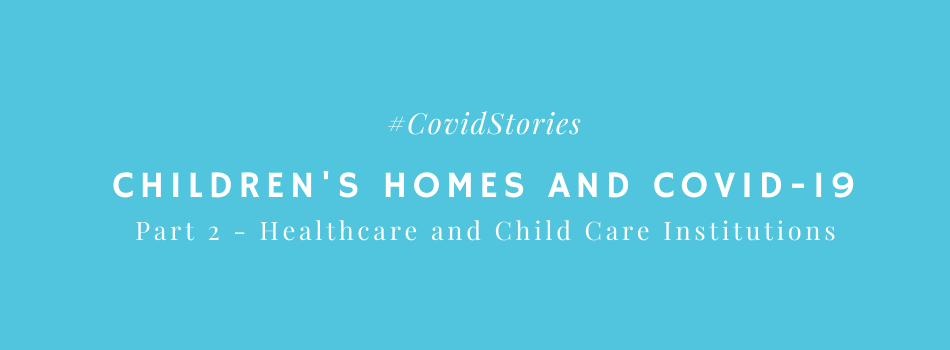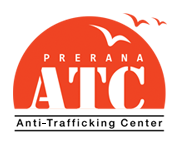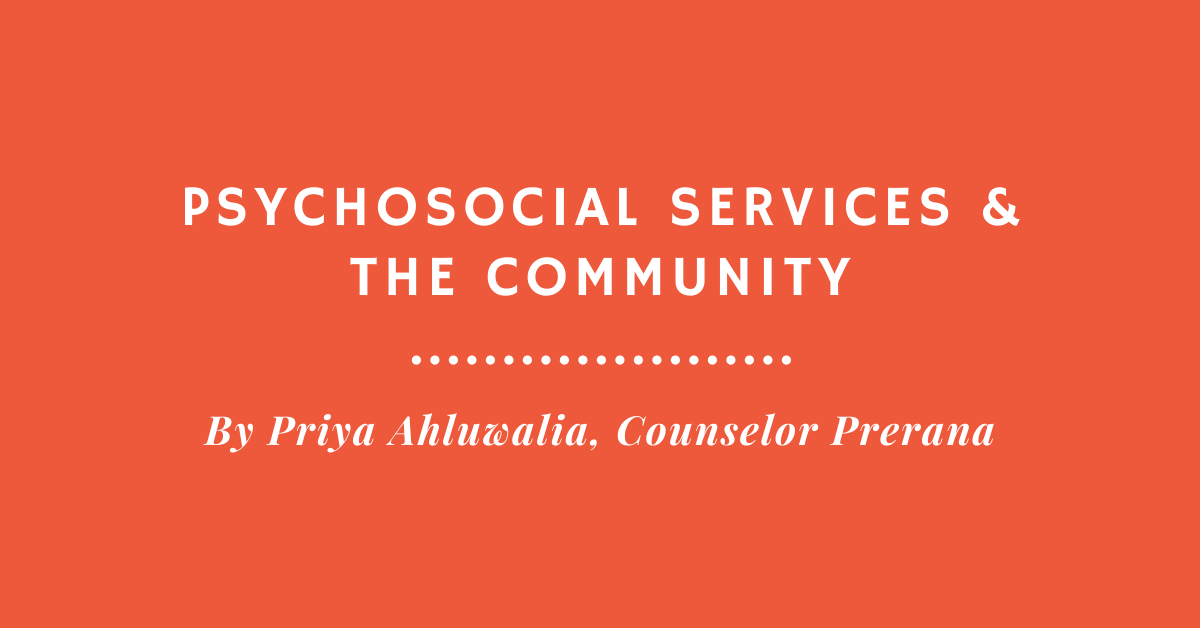
#2 Healthcare Challenges amidst the pandemic
Kashina Kareem
Assistant Director, Prerana
Azra Qaisar
Communications and Documentation Manager
For about four months now, India has been under the lockdown imposed by the Government of India to prevent the spread of COVID-19. The state governments in consultation with the center have also been planning to gradually open up the states and resume certain activities with restrictions since June. Since the lockdown, many child rights’ organizations who work with children, have got together virtually on a few occasions to discuss the impact of the lockdown on children and especially children living in child care institutions. As discussed in part one of this blog, child care institutions are facing many challenges during the current pandemic. In this post, we would be focusing on the health-related challenges emanating due to COVID-19, with the most prominent one being the lack of a contingency plan.
Missing contingency plans
Child care institutions are facing staffing issues due to restrictions in movement, and are functioning with mostly residential staff. In a situation where a number of children or staff members are infected with COVID-19 at the same time, there seems to be no plan about how the institution will function. Some CCI facilities at present do not have the infrastructure to isolate the children from one another. In the event of there being an outbreak within the facility – some pertinent questions remain unanswered for the institutions –
- Will the premises be sealed or will the residents be evacuated, in case some children at the CCI are tested positive for COVID-19?
- Where would the rest of the children be placed if some children are infected?
- If one or more staff members are infected, how will the institution function?
In case of an outbreak, evacuation may need to be strategized well, especially for institutions that house a large number of children. For new admissions in child care institutions, the protocol issued to prevent the spread of COVID-19 states that they must be quarantined and kept in isolation for 14 days within the facility. Child care institutions have concerns about this, as they may not necessarily be equipped to facilitate the same infrastructure. Other concerns regarding the mental and physical health of the child during this period of isolation are also left unaddressed. The measures that CCIs are being asked to implement are being conveyed in a top-down approach, without seeking their participation, and thus not accounting for their day-to-day challenges.
On April 3rd, the Supreme Court passed an Order taking Suo Moto cognizance of the matter of children in CCIs and ordered the state governments to prepare emergency plans for child care institutions. Among other things, the Order sought that the staff is put on rotational shifts and a system of volunteers be developed who could step in if the staff is unable to. However, our experiences in Mumbai and some districts of Maharashtra, tell us that the same is yet to be implemented. The child care institutions, however, have received many advisories and instructional guides on mitigating the crisis but the consultation and collaboration to manage the crisis are yet to be experienced.
In the past few months, two cases have come to light in the states of Tamil Nadu and Uttar Pradesh, where a number of children in a CCI tested positive for COVID-19. Like in most of the other states, there were no contingency plans in place and thus, the state government was left to act in urgency within a few hours’ notice. In Uttar Pradesh, the newspapers were flooded with information about the outbreak. The government authorities, including the CCI staff, were helpless as the facility was already running at over 40% of its approved capacity. They were of the opinion that maintaining social (physical) distancing under such circumstances was not possible.
Meanwhile, the matter has also been taken up Suo Moto by the Supreme Court seeking reports on the situation of the children affected in the CCI in UP. The apex court has sought a status report from different state governments on steps taken to protect children in Children’s Homes amid the pandemic. However, the operational issues are yet to be addressed by the respective state governments, along with developing an essential contingency plan in case a number of children and staff members test positive in a Children’s Home.
Accessing the healthcare system
At present, all child care institutions have been asked to submit daily reports on the health of the children as a precautionary measure. The advisories for child care institutions state that the institution must have daily health check-ups for all residents. Given the extent of the crisis, finding doctors who are willing to visit the institution is a major challenge. The doctors’ fees for these check-ups are an extra expenditure in the current crisis which not all CCIs may be financially equipped to afford. The restrictions on travel have also been in place, making access to medical assistance quite challenging.
There are residents in most child care institutions who are suffering from other health concerns like tuberculosis, HIV, cancer, etc. Some children are also pregnant and require special care. There are also children undergoing psychiatric treatment where a break in the treatment regime can cause a relapse in the condition of the child. Procuring medicines is also a challenge as the medicines are prescription drugs and are not available over the counter. Children with special needs and children with disabilities might require special care as well. For child care institutions, ensuring continuity of treatment and timely assistance to children is becoming increasingly difficult in current circumstances. Since the priority of all hospitals is to treat patients with COVID-19, patients with other medical needs may not get the needed medication and care. Many child care institutions have shared their anxieties about the availability and steady supply of ART (antiretroviral therapy) drugs for their HIV positive residents.
When a child who is placed in a child care institution falls sick, the facility is supposed to take them to a government hospital. In a situation where a child’s condition worsens, and they require hospitalization, the child along with an accompanying staff member will be further put to risk in a hospital. Since most hospitals are working with COVID-19 patients, it increases the risk of infection to the children if they are taken there. The hospitals are also overcrowded and often refuse patients due to the high volume of cases. In such circumstances, government hospitals may not be a feasible option for child care institutions. Accessing government hospitals for addressing the health concerns will in turn also make other children in the facility vulnerable.
Mental Health
The pandemic is a unique and unprecedented crisis, bound to have an impact on the mental health of both the staff members and the children. In CCIs, it has created feelings of anxiety, uncertainty, and added to the stress among the children. Since assistance is limited, there is also a risk of existing mental health conditions getting aggravated in the absence of counseling services. As discussed extensively in the previous blog, certain processes are temporarily suspended, which has led to an increase in the stress and anxiety of the children in CCIs. This has unfortunately resulted in instances of self-harm, some of the children have tried to run away from the CCIs as well, risking the health of other children as they are traced and handed over to the CCI authorities.
In the case of new admissions, a child who has been isolated after being moved into a new environment might find the surroundings distressing. If the child is facing trauma or has a pre-existing mental health concern, it can have adverse effects on the child. This will also affect their adjustment to the new environment. While the quarantine is necessary for the wellbeing of the child, and other children, ensuring that the mental health of the child is not affected during the isolation period becomes a major challenge.
Many organizations, including Prerana, have established tele-counseling services with the children with who they work. However, adaptive methods of counseling like tele-counseling and virtual-counseling need infrastructural support like a phone, internet connection, laptop, etc. to ensure effective delivery, and the Homes that are running with minimal resources may not be equipped with the same. In cases where these services have been established, it is helping in providing emergency psychological aid but it cannot be seen as a replacement for in-person counselling. These services may not be able to offer the same sense of comfort and emotional safety as the counsellor may not be able to witness the important non-verbal cues to identify the child’s socio-emotional state.
As the need for counseling grows in the current crisis, an overarching challenge for mental health professionals is also the perception of mental health services by child protection authorities. Professional counseling services are often perceived as a ‘magic wand’ to address all concerns regarding a child’s behavior. In our experience, the understanding of the process of counseling and its relative impact on the overall well-being of the child is not given due consideration but seen as a way to ‘fix’ behavioral issues. The expectation is to showcase immediate results in the behavior of the child, which is not possible or within the scope of the counselor. This gets further challenging when the counseling takes place remotely.
Another concern is the mental health of the staff at CCI. In the current situation, the caregivers are stressed and overburdened. They may not be able to provide adequate care and attention to the children under their care. In the absence of clarity on contingency plans, many caregivers are afraid of losing their jobs if a child is tested positive in their facility.
Lack of resources
The pandemic has increased the requisite resources for child care institutions. Procuring ration has been a challenge in itself but in addition to their routine supplies, now they also need to make provisions for masks, sanitizers, soaps, disinfectants, medical fees, etc. As mentioned above, not all institutions are able to afford these costs, and with restrictions in movement, donations have become limited too. The lack of resources is evident in accessing health care as well. In a case in Chennai, 43 children were tested positive for COVID-19 in a Children’s Home. However, the facility could not even manage to procure transportation other than two-wheelers to take the children to the nearby hospital.
In terms of funding, through our interactions with stakeholders, we have gathered that some CCIs that depend on the funding from the government has been facing financial difficulties as their funding has stopped since the lockdown. In Maharashtra, there are some government-run CCIs funded by the state Juvenile Justice funds. Earlier this year, the state government had announced 2 crore rupees to be allocated for the Juvenile Justice Fund for the year 2020, but on-field observations indicate that the fund is not reaching the child care institutions in some districts. Amid the crisis, some CCIs are even struggling to procure cooking gas, which was largely functioning through donations, and assistance by civil society organizations.
As a network of organizations running CCIs, representatives from over 25 CCIs have placed some of these concerns before the relevant authorities including the Dept. of Women and Child, Juvenile Justice Committee of Bombay High Court, Ministry of Women and Child Development with relevant recommendations but are still waiting to hear from them. The concerns that have been shared in this article are based on our experiences, and also insights gained from partner organizations and stakeholders. COVID-19 is a challenging situation for all, but these issues highlight that it could prove to be more challenging for CCIs than many others working within the domain of child rights.
To be or not to be? Questions on motherhood searching answers
This blog is the second and final part of our series on the impact of the pandemic on Children’s Homes.
The blog post was first published on Dr. Pravin Patkar's Blog 'Expressions'. The post sheds light on the impact and Read more
In the current COVID and lockdown situation, one of the adversely affected communities is the migrant communities. Our Sanmaan project Read more



